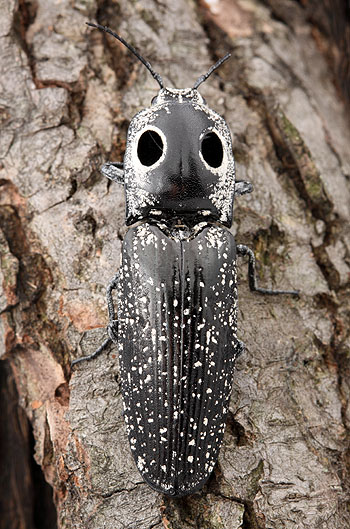 Alaus oculatus (Elateridae) - The Eyed Elater
Alaus oculatus (Elateridae) - The Eyed Elater
Illinois
One of North America's largest beetles, the eyed elater is more than an inch long. Alaus oculatus is widespread in the deciduous forests of eastern North America where their larvae are predators of wood-boring beetles. Other species of Alaus occur in the south and west. This individual was attracted to a pheromone trap intended to bring in longhorn beetles as part of a University of Illinois study on beetle pheromones, a ready demonstration of how predators may exploit the chemical signaling of their prey.
This particular beetle has been around the block already, apparently. Many of the hairs have worn off and both antennae are missing segments. Still, a striking insect.

photo details: Canon 100mm f2.8 macro lens on a Canon EOS 50D
ISO 100, f/11, 1/160 sec (top) 1/125 sec (bottom), indirect strobe in a white box

It's amazing how the "eyes" don't reflect any light from the flash.
I know it's diffuse light, but even so they must have some microtructure that absorbs all light-reminds me of some butterflies with velvety black wings, and no shine.
TEO- yeah, that is remarkable. And you're right, the spots appear to be made of a dense covering of black scales, much like butterfly wings.